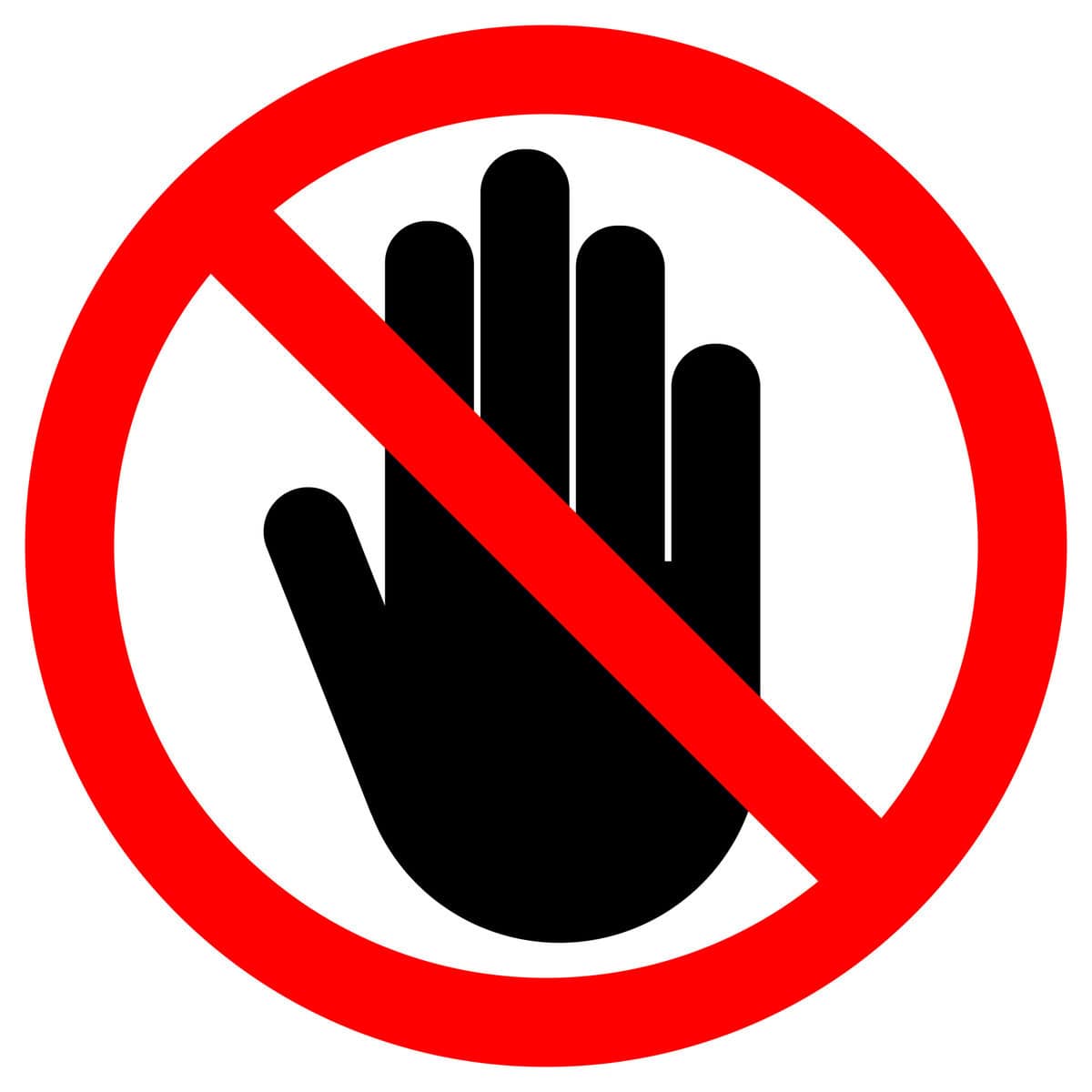
First, I want to acknowledge that a person with a hoarding disorder is not defined by their disorder. People who hoard are much more than their collection of stuff. My use of the word “hoarder” in this piece is contrary to how I like to express myself. But I know that this is a term people search for and I want someone looking for information I am going to share to be able to find it. It’s important if you find yourself in this situation to know how to stop enabling a hoarder.
There is a big difference between someone who has lots of stuff and someone who has a hoarding disorder.
Here are the 3 main symptoms of compulsive hoarding:
- A person collects and keeps a lot of items, even things that appear useless or of little value to most people, and
- These items clutter the living spaces and keep the person from using their rooms as they were intended, and
- These items cause distress or problems in day-to-day activities.
(Taken from the International Obsessive Compulsive Disorder Foundation Hoarding Fact Sheet)
You will make more progress with a person with a hoarding disorder if they are also working with a therapist.
Someone with a house full of stuff may appear to be hoarding but when it comes right down to it, if they are able to release some of their things, it may not be a compulsive hoarding disorder.
What is their vision for their home?
One of the first things to do to stop enabling a hoarder is to ask them to define their vision for their home.
How do they want it to look?
Chances are they are not happy with the way it is currently. Find out if there was something that happened which may account for the accumulation of stuff.
Ask if they would like help reducing the amount of stuff in their home so that they can work toward their vision.
Pick a place to start.
Talk about safety first and the importance of making it easy to open the front door to the home. Ask how they want to use their rooms.
They may want a craft room or area instead of one for dining.
The bathroom is a good place on which to focus after clearing the doors. Bathrooms have a tendency (even for those of us who are not collectors) to collect things that are half-used. Since a bathroom is usually a small space it may be easy to have success there. Success breeds success.
Be gentle in your approach.
You will get no where if you start by saying something like “why don’t you just start picking things up and putting them away?”.
Asking a question like this is counterproductive. You will be shown to the door quickly and never get access again.
You will get further if you start by asking permission to help sort just one pile. Work with the person to define what stays and what can leave either as trash, through recycling or donation.
Always ask permission before opening a cupboard, a drawer, going into a room, or touching something. The homeowner may not want you to touch their possessions. It can feel intrusive to have someone handling your personal things. Be sensitive to this.
Listen
Be totally present with the person with whom you are working. Listen to their stories. You may find that they are able to take a picture of something and then either donate or recycle it after telling the story about how they acquired it.
Listening intently will give you a better understanding of how they came to accumulate so much stuff. Was it safekeeping for someone else? Is it a result of a move and not having the same sort of storage in the new home?
When you listen with an open mind, you are better able to create personalized organizing solutions.
Stop enabling the hoarder by setting boundaries and creating daily routines.
Let the homeowner know that until they set some boundaries and create daily routines things will continue as they are. This is a fact. Work with the person to set boundaries with which they are comfortable and are willing to follow.
Ask:
- How long to keep magazines?
- How many books to keep by the bed?
- How many pairs of black pants?
- How many plastic food containers to keep?
- Is it necessary to keep something they do not either love, use or need?
- Where do they find the things they bring in?
- Are they window shopping?
- Do they regularly visit the Dollar Store?
- Are flyers at the grocery store or the doctor’s office enticing to them?
Make a few posters with the boundaries clearly stated.
Add some mantras to the posters to help the person resist collecting and bringing in more things.
Tell them to ask themselves before they pick something up or buy something:
- Where will I keep this?
- Will I use it?
- Do I already have something like this?
They can also say to themselves “I will walk away today. If I still want it tomorrow, I will come back and decide if I want to buy it”
Put a large recycling bin in the kitchen or living room. This makes it easy for the person to recycle paper, flyers, magazines, and food containers.
Write down the daily routine. Providing structure to the day is another way to stop enabling a hoarder. You remove the flexibility to go out and pick a few things up.
Group like things together.
Quite often the homeowner is unaware that they have multiples of items. They may have looked for something, not found it, and bought another one.
Work together and group like items. Then ask: How many do you need? If it is scissors, they may want to keep several so they have a set in various rooms or areas.
This is another boundary.
Create a marinating or pending box.
If the person simply can’t make a decision about something in the pile, have them put it in a marinating or pending box. It can stay in the box for as long as it takes for them to be ready to think about it again. However, do not create a second place to store things to think about. Make a rule that If the box is full, something has to leave the box.
Remember to take breaks and breathe.
It is really difficult to work with someone who hoards. You may not like the answers they give you. Do not push back too hard. This is a very challenging disorder or tendency.
When you get a little frustrated, ask to take a break. Chances are they are frustrated, too.
Breathe, drink a glass of water, step outside for a few minutes and then return.
Understand that there is every likelihood the person will continue to hoard.
The job at hand is to create safe strategies to help them manage their stuff. With any luck you will also be able to get the person to release some things.
Work for short periods of time.
Decision making is hard work. When you work on decluttering for extended periods of time the decisions are often hasty. A person with a large accumulation of stuff must make a decision on every item.
Keep the work periods short.
Other questions to ask.
Do you use this? If so, where do you use it? The answer to this question will help both of you figure out where to keep it.
If they do not use it, ask if they can let it go. Find out if there is a charity that they want to support. It is always easier to give freely to an organization you believe needs the things and will benefit from having them.
Remind them of the just in case 20/20 rule created by The Minimalists, Joshua Fields Millburn and Ryan Nicodemus. In brief, it says that if you can replace something you are keeping just in case in less than 20 minutes and for less than $20 just let it go.
In Conclusion
Working with someone who hoards is challenging. The goal is always to stop enabling the hoarder. Staying calm and in control requires endless patience and understanding. If you know someone who is living in an overfull home read the book I co-authored with Jonda Beattie and use these tips to work with them without losing your cool. You can also contact me to schedule a free 30-minute consultation.
Diane N. Quintana is an ICD Master Trainer, Certified Professional Organizer in Chronic Disorganization, Certified Professional Organizer, owner of DNQ Solutions, LLC and co-owner of Release Repurpose Reorganize LLC based in Atlanta, Georgia. She specializes in residential and home-office organizing and in working with people challenged by ADHD, Hoarding and chronic disorganization.


Your advice is always so wise, gentle, and compassionate. Whether a family member or a new professional organizer reads this, they will find practical, actionable advice to keep from making mis-steps. I suspect that for too many people with hoarding disorders, the world seems black-and-white and anticipating letting go of anything feels like a slippery slope to being expected to get rid of everything; setting boundaries in the way you’ve described gives them a safe place to stand. Great job!
Another great blog. It will be a good resource for many.
Excellent information and so helpful. I think this info would be really good to keep well for myself but also for some of my clients or people who ask about how they can help their loved one who hoards. Thank you for this great resource.
What great advice! I love that you broke down the steps into doable small tasks. Thanks for sharing your thoughts on this sensitive process.
I love the idea of setting boundaries with the person struggling with hoarding. If you can’t guy agreement and buy-in in theory, it is unlikely that you will achieve any progress in real life. Once the boundaries are set, then all parties can point to the boundaries as objective limitations which have been agreed upon. This helps take away the “people are making me get rid of things” mentality, and shifts to an “I am working to improve my situation” mentality. Wonderful post on a very challenging subject!